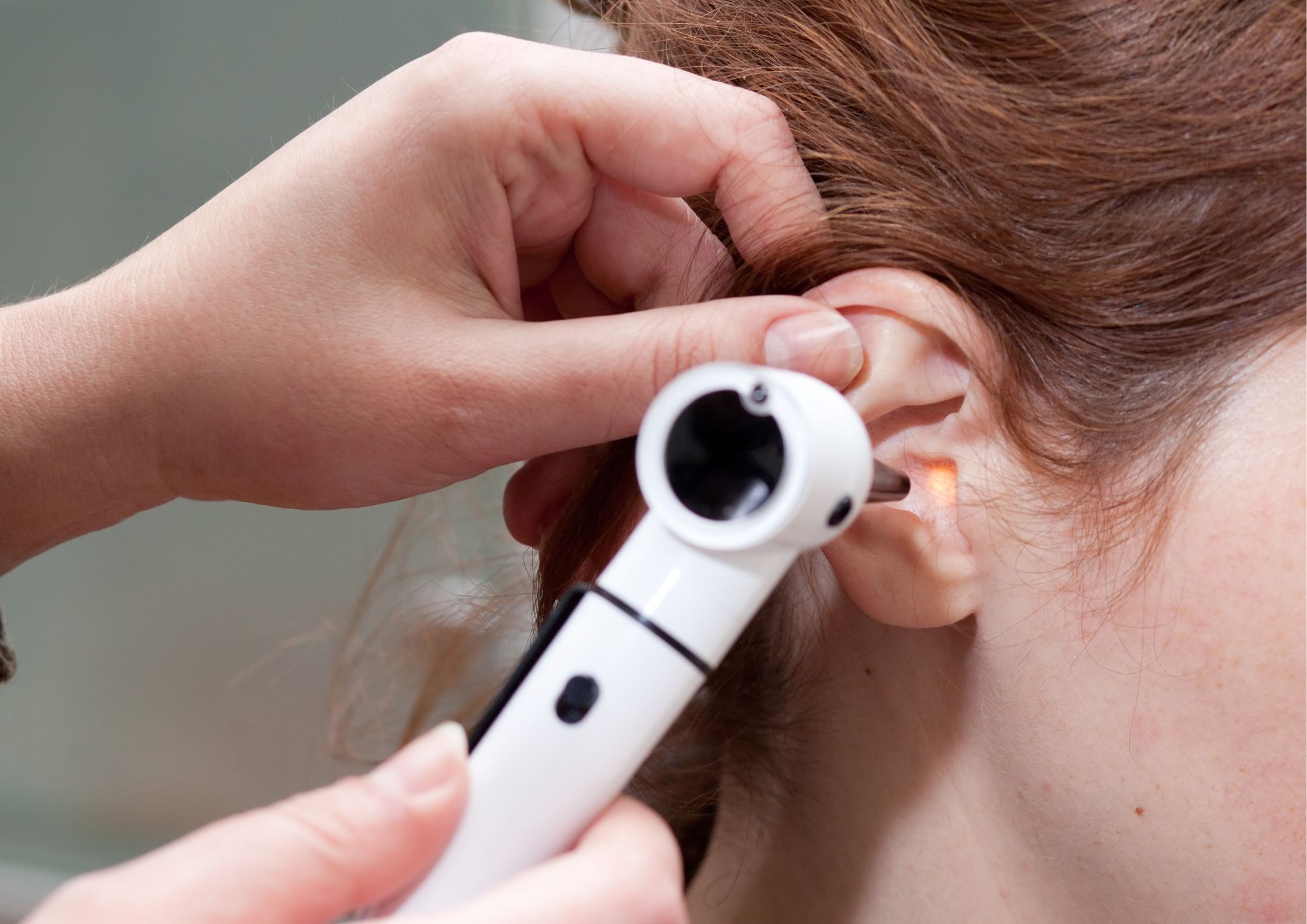You may have heard the phrase swimmer’s ear or have even had swimmer’s ear in the past. Swimmer’s ear is a more informal way of describing otitis externa, a type of outer ear infection. Below, you’ll find more information about what this infection is, the symptoms to look out for, and recommended treatments for swimmer’s ear.
What Is Swimmer’s Ear?

Swimmer’s ear is the phrase more commonly used for the outer ear infection, otitis externa. Otitis externa is an ear infection that affects the ear canal. The ear canal is the outer part of the ear that leads to the eardrum. An infection on the other side of the eardrum is a middle ear infection and is called otitis media. Swimmer’s ear can often be seen in the outer ear canal in the form of red, itchy skin or dried fluid that secretes from the ear.
Why Is It Called Swimmer’s Ear?
Swimmer’s ear is caused by water becoming trapped inside the ear canal. For this reason, it tends to be more common in people who swim regularly.
If ears have excess moisture inside or do not dry out adequately enough, this makes the skin in the ear canal more susceptible to defects. Bacteria (or fungi) are then able to enter the skin and an infection, otitis externa, develops. This is why it is called swimmer’s ear.
Who Gets Swimmer’s Ear?
Although the name ‘swimmer’s ear’ comes from the idea that people who swim more often are more likely to get it, anyone can get swimmer’s ear.
Swimmer’s ear can also be caused by small cuts or tears in the ear canal, which can become infected. Cuts and tears in the ear canal are usually down to something being put in the ear, like a cotton bud or a fingernail. You should therefore avoid putting anything into the ear that could damage the lining of the ear canal and cause an infection.
Finally, a build-up of ear wax can contribute to swimmer’s ear. Too much wax in the ear canal can cause a blockage and either stop fluid being released from the ear or prevent the ear from drying out enough. Making sure ears are clean and clear of excess ear wax can help prevent swimmer’s ear.
Symptoms Of Swimmer’s Ear
Swimmer’s ear usually only affects one ear at a time. One of the most common symptoms of swimmer’s ear is redness and inflammation in the ear canal.
There are some other typical symptoms of swimmer’s ear to look out for too:
- Ear pain or ear ache that can be anywhere from mild to severe
- An itchy feeling in the ear canal
- Clear or yellow discharge leaking from the ear
- Potential temporary hearing loss
- A feeling of fullness in the ear
These are the most widely reported symptoms of swimmer’s ear. If left untreated, symptoms can progress and hearing loss may become more obvious, pain can spread into the head or neck, and lymph nodes may become swollen. You may also develop a fever. It’s therefore best to treat the infection at the onset to avoid any advanced symptoms of swimmer’s ear.

How To Treat Swimmer’s Ear
At the onset of any pain or redness, an initial swimmer’s ear treatment is to take painkillers such as paracetamol or ibuprofen to help with any discomfort. You can also consider a cold compress or a heat pack to help reduce the pain.
Swimmer’s ear is unlikely to clear up on its own. Long-term swimmer’s ear treatment usually involves a course of antibiotic ear drops, often combined with a steroid preparation. In more severe cases, steroid ear drops may be prescribed.
Ear drops work best when they can get straight to the source of the infection. Therefore, having clean ears helps any swimmer’s ear treatment to work more efficiently. Using cotton buds or other tools to remove ear wax and clean ears could make the infection worse. Microsuction is a tried-and-tested gold standard method for removing ear wax that can be done even when there’s an ongoing ear infection like swimmer’s ear. Microsuction is a great treatment for swimmer’s ear/otitis externa as it helps to remove debris and pus which, in turn, allows the antibiotic drops to get to the place they need to in order to do their job.
How To Prevent Swimmer’s Ear
There are some steps you can take to reduce the likelihood of swimmer’s ear. These include:
- Wearing ear plugs or a swimming cap when swimming
- Making sure ears are thoroughly dried out after any water-based activities
- Cleaning ears regularly to avoid wax build-up
- Not using cotton buds, other tools, or even fingernails to remove ear wax
It’s important to look after the health of our ears anyway, but for those who are prone to getting swimmer’s ear taking the necessary steps to prevent it is even more of a priority.
Keeping Ears Clean With Ear Care Clinic
Our experienced clinicians are based across London, offering microsuction for anyone wanting to maintain clean and healthy ears. Removing ear wax at home can lead to infection. Even syringing can cause swimmer’s ear due to the excess water at high pressure that is flushed into the ear canal.
Ear microsuction is a completely safe, quick, and effective procedure that clears ear wax build-up. There’s no need to use drops or oils in the run-up to the procedure, and it can even be performed on the same day you make an inquiry.
Microsuction can be used to help ease an ear infection by clearing a wax blockage or simply to maintain good ear health all year round.
Please contact us to find out more about microsuction or book an appointment at one of our five London clinics today.
